Alfred the Great (886-899)
United the Anglo-Saxon kingdoms. He fought off a Viking invasion, though they kept the Danelaw (Northern England), and oversaw many important reforms. Traditionally the first King of England.
2/63
United the Anglo-Saxon kingdoms. He fought off a Viking invasion, though they kept the Danelaw (Northern England), and oversaw many important reforms. Traditionally the first King of England.
2/63

Edward the Elder (899-924)
Less learned than his father, but perhaps a better military leader. Long ignored, he is now regarded as having been crucial in defeating Viking power and properly establishing the united Anglo-Saxon kingdom in southern England.
3/63
Less learned than his father, but perhaps a better military leader. Long ignored, he is now regarded as having been crucial in defeating Viking power and properly establishing the united Anglo-Saxon kingdom in southern England.
3/63
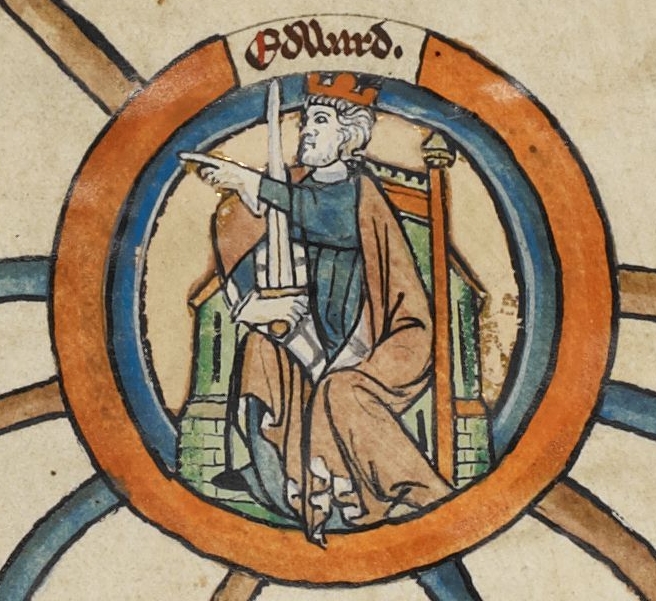
Athelstan (924-939)
The first true King of England, from 927 to the end of his reign. A religiously devout, wise ruler who introduced centralising administrative reform and widespread legal changes. Continued his predecessors' establishment of the nascent English kingdom.
4/63
The first true King of England, from 927 to the end of his reign. A religiously devout, wise ruler who introduced centralising administrative reform and widespread legal changes. Continued his predecessors' establishment of the nascent English kingdom.
4/63

Edmund I (939-946)
Struggled with the Vikings in Mercia and York (which had reverted to Viking control) for full dominance of England. He died in a brawl in Gloucestershire, apparently trying to save his steward from a thief.
5/63
Struggled with the Vikings in Mercia and York (which had reverted to Viking control) for full dominance of England. He died in a brawl in Gloucestershire, apparently trying to save his steward from a thief.
5/63
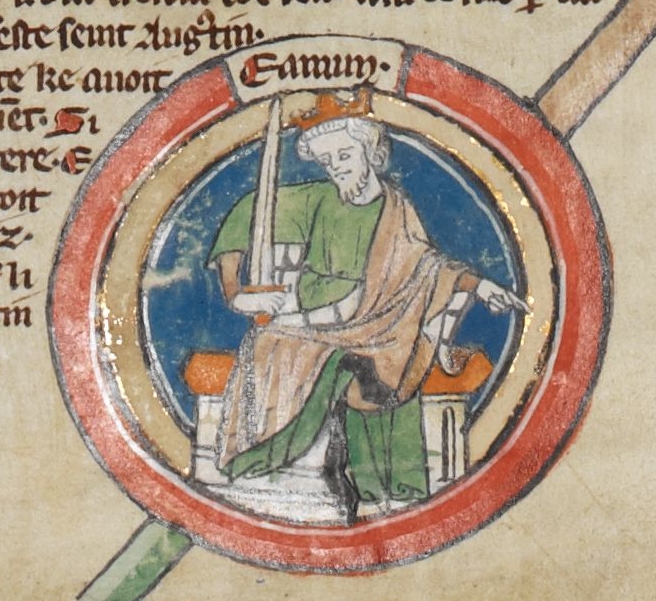
Eadred (946-955)
Continued to struggle with the Vikings in Northumbria. Known as the “Half-King” because of the power exerted by some of his advisors. A sickly man who died childless.
6/63
Continued to struggle with the Vikings in Northumbria. Known as the “Half-King” because of the power exerted by some of his advisors. A sickly man who died childless.
6/63

Eadwig the All-Fair (955-959)
Succeeded to the throne at the tender age of 15, and unsurprisingly struggled with overweening senior advisors and nobles. The kingdom was split in half under his reign, and his frequent gifts of land indicate serious political instability.
7/63
Succeeded to the throne at the tender age of 15, and unsurprisingly struggled with overweening senior advisors and nobles. The kingdom was split in half under his reign, and his frequent gifts of land indicate serious political instability.
7/63
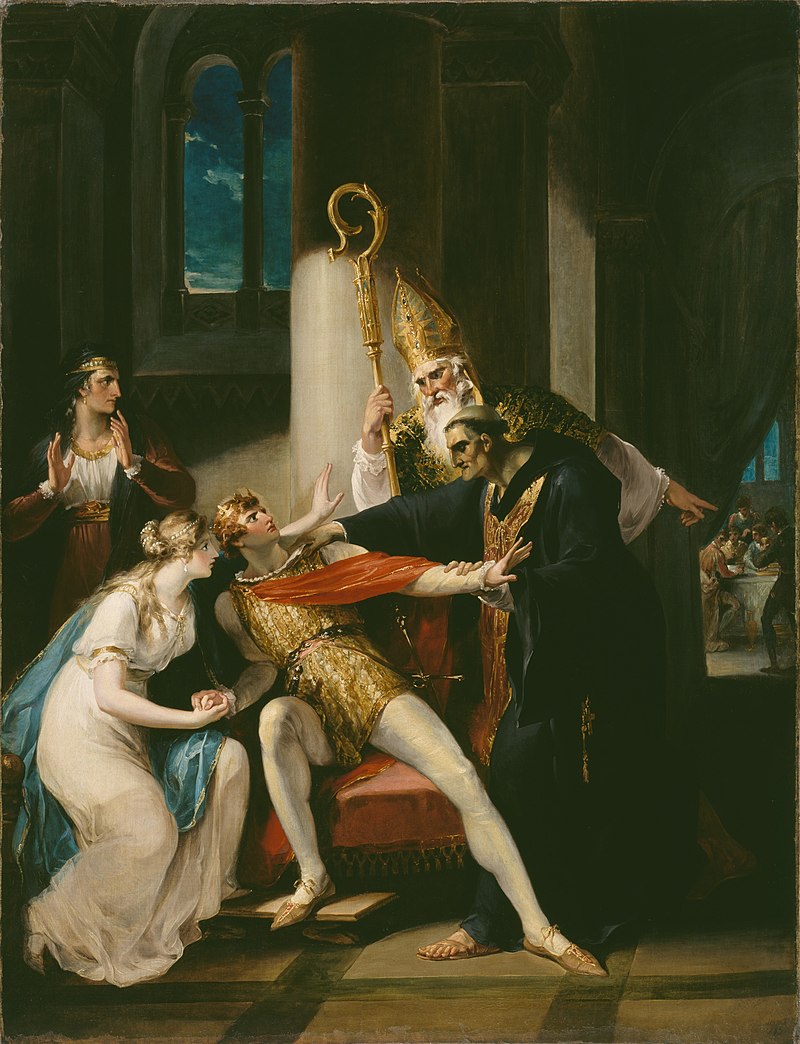
Edgar the Peaceful (959-975)
Also came to the throne as a teenager, but he managed to reunite the divided kingdom left by Eadwig and oversee an era of stability. His coronation in 973 created the tradition which continues to the present day.
8/63
Also came to the throne as a teenager, but he managed to reunite the divided kingdom left by Eadwig and oversee an era of stability. His coronation in 973 created the tradition which continues to the present day.
8/63

Edward the Martyr (975-978)
A short and unhappy reign. Many people did not recognise him as the true heir to Edgar, and he died in rather mysterious circumstances amidst the threat of civil war. Now a Christian saint.
9/63
A short and unhappy reign. Many people did not recognise him as the true heir to Edgar, and he died in rather mysterious circumstances amidst the threat of civil war. Now a Christian saint.
9/63

Æthelred the Unready (978-1013)
The longest reigning Anglo-Saxon monarch, his nickname comes from being poorly-advised rather than unready in the modern sense. The Vikings became troublesome again and he was forced to pay tribute to the Danish king.
10/63
The longest reigning Anglo-Saxon monarch, his nickname comes from being poorly-advised rather than unready in the modern sense. The Vikings became troublesome again and he was forced to pay tribute to the Danish king.
10/63

Sweyn Forkbeard (1013-1014)
Sweyn, who was King of Denmark, had seized his kingdom from his famous father, Harald Bluetooth. Proof of the renewed threat of Viking power, Sweyn invaded England and deposed Æthelred, though he died shortly after.
11/63
Sweyn, who was King of Denmark, had seized his kingdom from his famous father, Harald Bluetooth. Proof of the renewed threat of Viking power, Sweyn invaded England and deposed Æthelred, though he died shortly after.
11/63

Æthelred the Unready (1014-1016)
Briefly restored to the throne by English noblemen after Sweyn’s death, who preferred Æthelred’s rule to that of Cnut, Sweyn’s son. They forced him to sign a pact of loyalty to them and introduce reforms in their interest.
12/63
Briefly restored to the throne by English noblemen after Sweyn’s death, who preferred Æthelred’s rule to that of Cnut, Sweyn’s son. They forced him to sign a pact of loyalty to them and introduce reforms in their interest.
12/63
Edmund Ironside (1016)
Inherited the war with Denmark and was promptly defeated by Cnut despite efforts to resist the invasion (hence his nickname, Ironside, referring to military valour). Was given Wessex to rule, but after his death Cnut took the kingdom for himself.
13/63
Inherited the war with Denmark and was promptly defeated by Cnut despite efforts to resist the invasion (hence his nickname, Ironside, referring to military valour). Was given Wessex to rule, but after his death Cnut took the kingdom for himself.
13/63

Cnut the Great (1016-1035)
Restored the House of Denmark to the throne, and - after uniting the kingdoms of Denmark, Norway, and England - ruled the North Sea Empire. An incredibly successful king who hoped to unite these North Sea kingdoms culturally and economically.
14/63
Restored the House of Denmark to the throne, and - after uniting the kingdoms of Denmark, Norway, and England - ruled the North Sea Empire. An incredibly successful king who hoped to unite these North Sea kingdoms culturally and economically.
14/63

Harold Harefoot (1035-1040)
A short reign marked by sibling trouble, both from Harthcanut (who was supposed to be ruling England but got stuck in Denmark) and from his Anglo-Saxon stepbrothers Edward and Alfred, who wanted to retake the Kingdom of England.
15/63
A short reign marked by sibling trouble, both from Harthcanut (who was supposed to be ruling England but got stuck in Denmark) and from his Anglo-Saxon stepbrothers Edward and Alfred, who wanted to retake the Kingdom of England.
15/63

Harthcanut (1040-1042)
Son of Cnut the Great and brother of Harold, Harthcanut found it difficult to maintain his father’s hard-won kingdoms. Indeed, he was the last Danish ruler of the Kingdom of England.
16/63
Son of Cnut the Great and brother of Harold, Harthcanut found it difficult to maintain his father’s hard-won kingdoms. Indeed, he was the last Danish ruler of the Kingdom of England.
16/63

Edward the Confessor (1042-1066)
The final king of the House of Wessex. Pious, righteous Edward returned Anglo-Saxon rule to England after nearly thirty years of Danish dominance. Now venerated as a saint, and formerly one of England’s patron saints.
17/63
The final king of the House of Wessex. Pious, righteous Edward returned Anglo-Saxon rule to England after nearly thirty years of Danish dominance. Now venerated as a saint, and formerly one of England’s patron saints.
17/63

Harold Godwinson (1066)
Edward's brother-in-law, who already exerted great power in his reign. Successfully dealt with the invasion of Harald Hardrada, King of Norway, before marching south to the fateful Battle of Hastings. The last Anglo-Saxon king of England.
18/63
Edward's brother-in-law, who already exerted great power in his reign. Successfully dealt with the invasion of Harald Hardrada, King of Norway, before marching south to the fateful Battle of Hastings. The last Anglo-Saxon king of England.
18/63

William the Conqueror (1066-1087)
Established the House of Normandy, themselves descended from Vikings, and forever altered England’s Anglo-Saxon society. Introduced new nobility and collated the vastly important Domesday Book. Put down English rebellions in the Conquest.
19/63
Established the House of Normandy, themselves descended from Vikings, and forever altered England’s Anglo-Saxon society. Introduced new nobility and collated the vastly important Domesday Book. Put down English rebellions in the Conquest.
19/63

William Rufus (1087-1100)
Son of the Conqueror, who inherited England while his brother inherited Normandy. Did a good job of further solidifying Anglo-Norman rule. An interesting character – unmarried, childless, and devil-may-care – who died in suspicious circumstances.
20/63
Son of the Conqueror, who inherited England while his brother inherited Normandy. Did a good job of further solidifying Anglo-Norman rule. An interesting character – unmarried, childless, and devil-may-care – who died in suspicious circumstances.
20/63
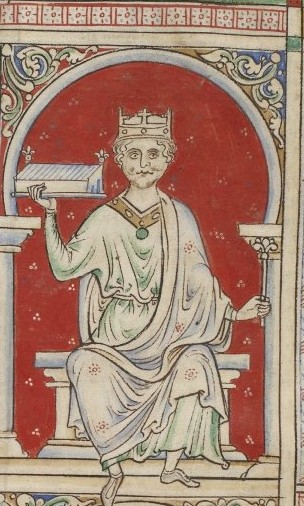
Henry I (1100-1135)
Third son of the Conqueror. Fought with his brother Robert, the King of Normandy, and highly effective in developing an Anglo-Norman system of laws, taxation, and governance. His only son William died in the White Ship disaster of 1120…
21/63
Third son of the Conqueror. Fought with his brother Robert, the King of Normandy, and highly effective in developing an Anglo-Norman system of laws, taxation, and governance. His only son William died in the White Ship disaster of 1120…
21/63

Stephen of Blois (1135-1154)
Nephew of Henry, whose reign was marred by a destructive, 14-year civil war with his cousin, Mathilda, sparked by the White Ship disaster. A chaotic, violent, and difficult era.
22/63
Nephew of Henry, whose reign was marred by a destructive, 14-year civil war with his cousin, Mathilda, sparked by the White Ship disaster. A chaotic, violent, and difficult era.
22/63

Henry II (1154-1189)
First of the Angevin Kings, and first of the House of Plantagenet. The son of Mathilda, Stephen had recognised Henry as heir to secure peace. He ruled an empire of which England was part, and which was not its primary kingdom. Also: Thomas Beckett.
23/63
First of the Angevin Kings, and first of the House of Plantagenet. The son of Mathilda, Stephen had recognised Henry as heir to secure peace. He ruled an empire of which England was part, and which was not its primary kingdom. Also: Thomas Beckett.
23/63

Richard the Lionheart (1189-1199)
The Crusader King. England’s national motto – dieu et mon droit – was his battle cry when he led the Third Crusade. Spent as little as 6 months in England; the rest of his reign spent fighting in France and the Holy Land.
24/63
The Crusader King. England’s national motto – dieu et mon droit – was his battle cry when he led the Third Crusade. Spent as little as 6 months in England; the rest of his reign spent fighting in France and the Holy Land.
24/63
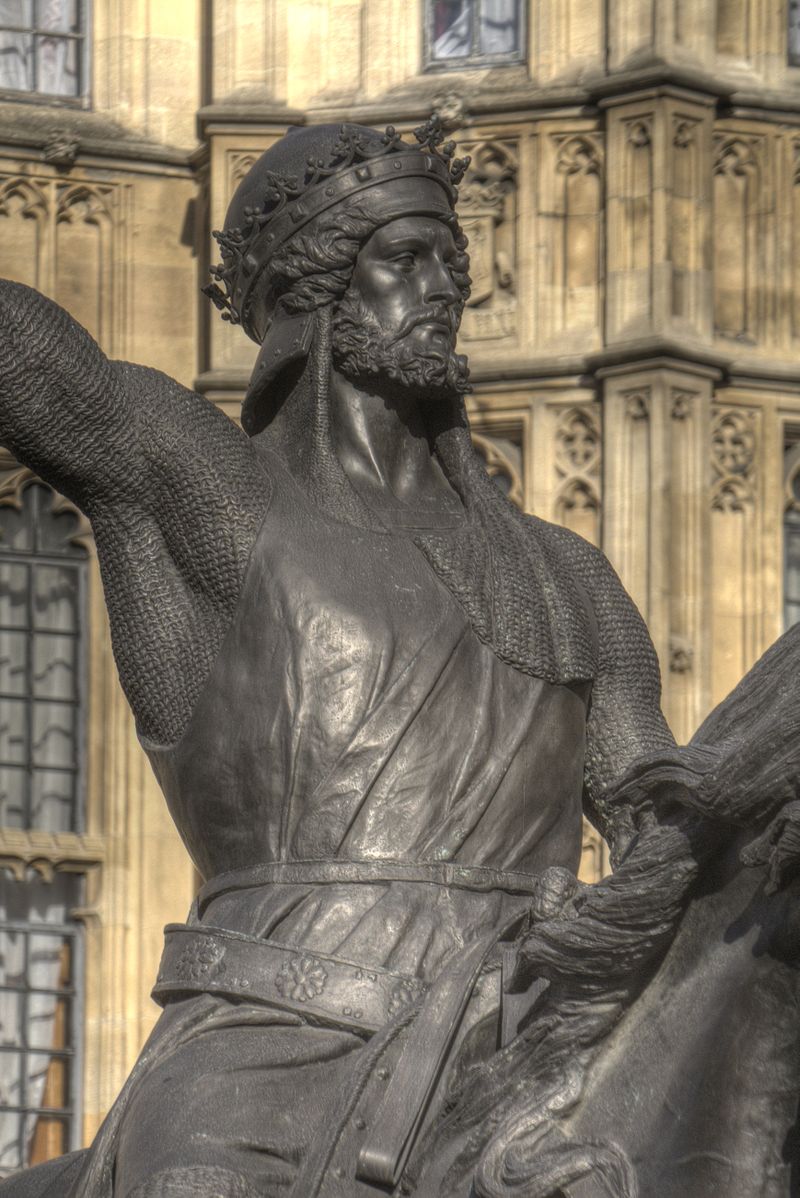
John (1199-1216)
Bad King John. Son of Henry and brother of Richard, he lost his father’s Angevin Empire. The nobles rebelled and he signed the Magna Carta in 1215, which proved foundational for the English constitutional system. Often depicted as Robin Hood’s nemesis.
25/63
Bad King John. Son of Henry and brother of Richard, he lost his father’s Angevin Empire. The nobles rebelled and he signed the Magna Carta in 1215, which proved foundational for the English constitutional system. Often depicted as Robin Hood’s nemesis.
25/63
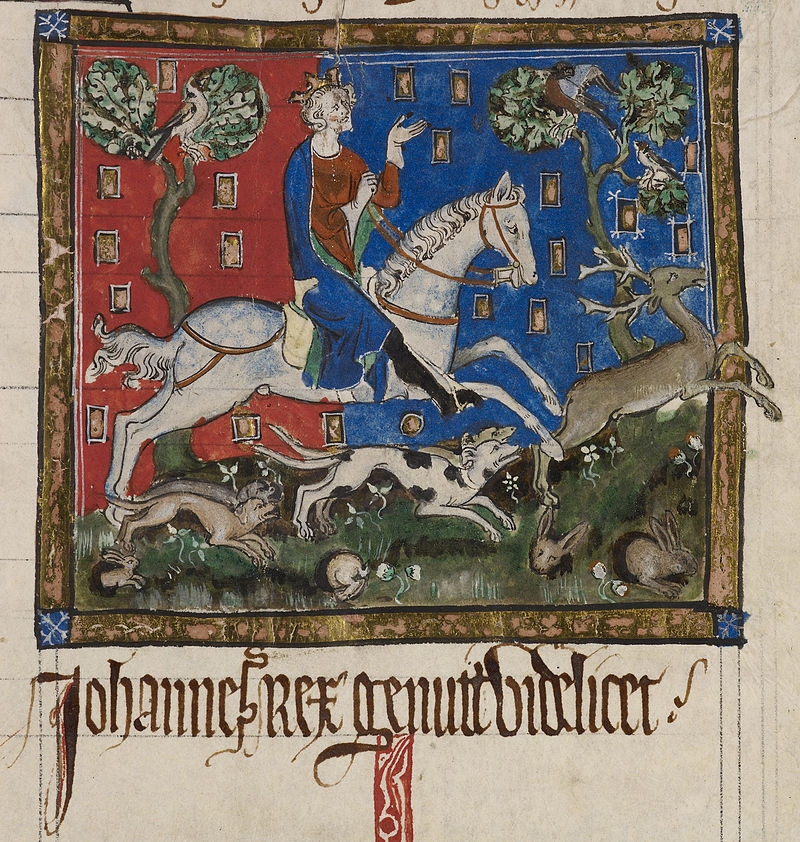
Henry III (1216-1272)
The boy king inherited a mess but had the longest reign of any Medieval English king. A complicated rule featuring more trouble with barons and attempts to win back lost kingdoms in France. Dante put him in Purgatory with other “failed” rulers.
26/63
The boy king inherited a mess but had the longest reign of any Medieval English king. A complicated rule featuring more trouble with barons and attempts to win back lost kingdoms in France. Dante put him in Purgatory with other “failed” rulers.
26/63

Edward I (1272-1307)
Introduced important legal reforms, including the establishment of a permanent Parliament, and brought Wales under English rule. Started a war with Scotland. Unusually tall for a man of his era, hence the nickname Longshanks. Built castles.
27/63
Introduced important legal reforms, including the establishment of a permanent Parliament, and brought Wales under English rule. Started a war with Scotland. Unusually tall for a man of his era, hence the nickname Longshanks. Built castles.
27/63

Edward II (1307-1327)
Inherited the Scottish war; decisively defeated by Robert the Bruce in 1314. An unpopular reign marked by trouble with barons and not helped by his controversial bond with Piers Gaveston. His wife turned against him and he was eventually deposed.
28/63
Inherited the Scottish war; decisively defeated by Robert the Bruce in 1314. An unpopular reign marked by trouble with barons and not helped by his controversial bond with Piers Gaveston. His wife turned against him and he was eventually deposed.
28/63

Edward III (1327-1377)
Became king at 14 but enjoyed a hugely successful 50 year reign, restoring royal authority after his father’s disastrous rule and making England a formidable power. King during the Black Death. He also started the Hundred Years’ War with France.
29/63
Became king at 14 but enjoyed a hugely successful 50 year reign, restoring royal authority after his father’s disastrous rule and making England a formidable power. King during the Black Death. He also started the Hundred Years’ War with France.
29/63
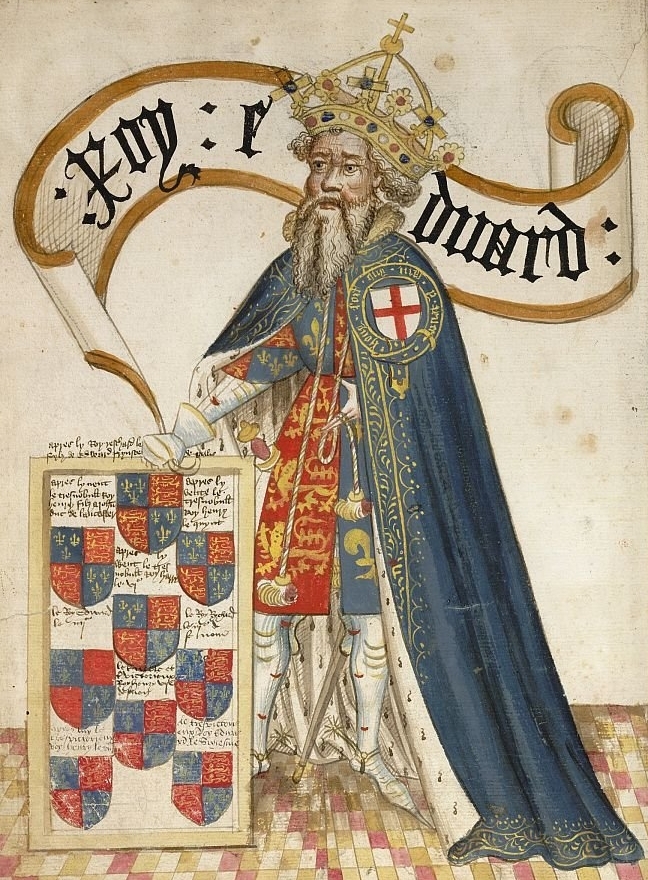
Richard II (1377-1399)
Edward’s grandson; became king at 10. Powerful advisors influenced his rule, but helpful in dealing with the Peasants’ Revolt. Famously portrayed by Shakespeare as a madman, Richard clearly did not have the right personality for a king.
30/63
Edward’s grandson; became king at 10. Powerful advisors influenced his rule, but helpful in dealing with the Peasants’ Revolt. Famously portrayed by Shakespeare as a madman, Richard clearly did not have the right personality for a king.
30/63

Henry IV (1399-1413)
Richard’s cousin, who deposed him, and the first King of England to speak English as his first language. Dealt with the rebellions of the Welshman Owain Glyndŵr and of Sir Henry Hotspur. The first king of the House of Lancaster.
31/63
Richard’s cousin, who deposed him, and the first King of England to speak English as his first language. Dealt with the rebellions of the Welshman Owain Glyndŵr and of Sir Henry Hotspur. The first king of the House of Lancaster.
31/63

Henry V (1413-1422)
Immortalised by Shakespeare as England’s ultimate warrior-king, and indeed famous for his success at the Battle of Agincourt and otherwise in the Hundred Years’ War. Became heir apparent to the French throne.
32/63



Immortalised by Shakespeare as England’s ultimate warrior-king, and indeed famous for his success at the Battle of Agincourt and otherwise in the Hundred Years’ War. Became heir apparent to the French throne.
32/63

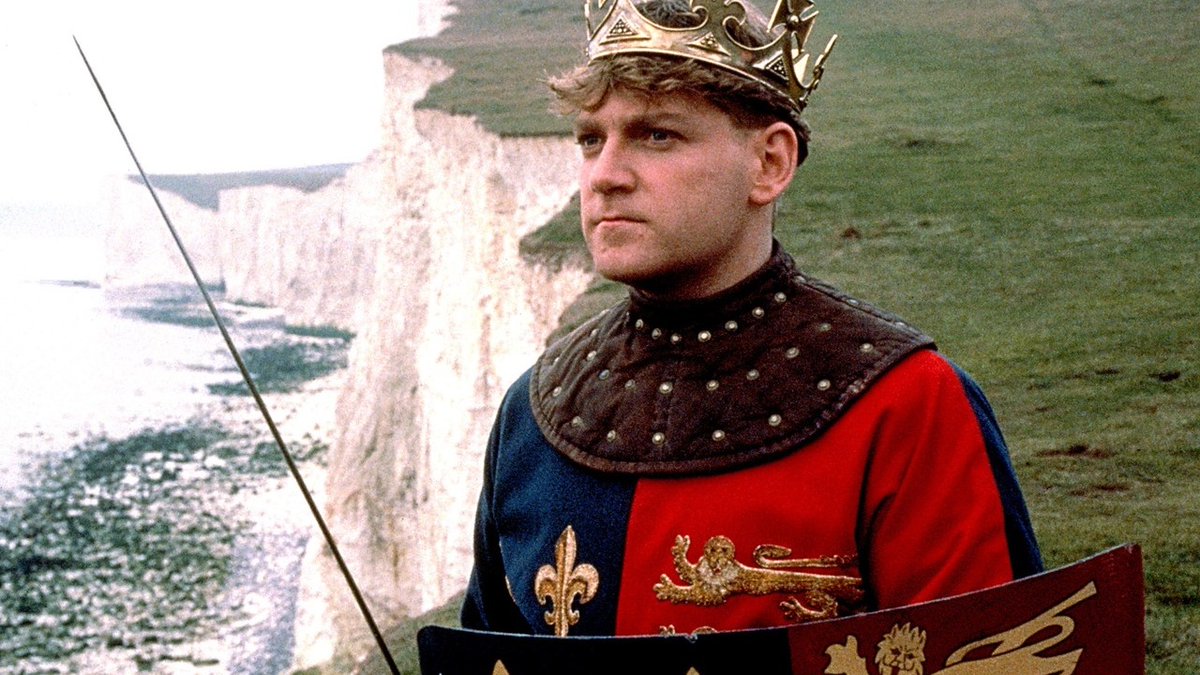

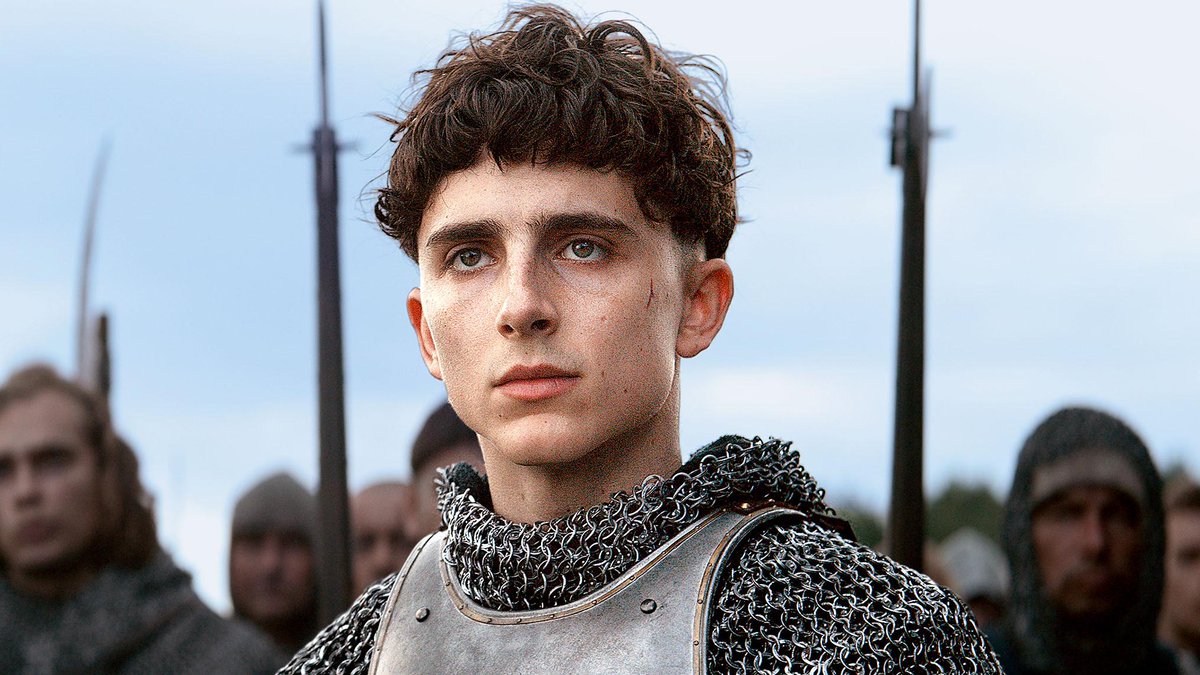
Henry VI (1422-1461)
He became King of England and France at just 9 months, not declared fit to rule until 1437. During a reign marred by troublesome nobles and the loss of his father’s conquests in France, the Wars of the Roses broke out. Lost his wits in the end.
33/63
He became King of England and France at just 9 months, not declared fit to rule until 1437. During a reign marred by troublesome nobles and the loss of his father’s conquests in France, the Wars of the Roses broke out. Lost his wits in the end.
33/63

Edward IV (1461-1470)
First king of the House of York. He deposed Henry and made good of his father’s claim to the throne. Fell out with his advisor, the Earl of Warwick, who revolted and put Henry back on the throne.
34/63
First king of the House of York. He deposed Henry and made good of his father’s claim to the throne. Fell out with his advisor, the Earl of Warwick, who revolted and put Henry back on the throne.
34/63

Henry VI (1470-1471)
After years of imprisonment in the Tower of London, the mentally unstable Henry briefly became king again, before being re-deposed by Edward. He died ‘mysteriously’ in the Tower of London, most likely on the orders of Edward.
35/63
After years of imprisonment in the Tower of London, the mentally unstable Henry briefly became king again, before being re-deposed by Edward. He died ‘mysteriously’ in the Tower of London, most likely on the orders of Edward.
35/63
Edward IV (1471-1483)
The House of York back on the throne. After being deposed he fled to Flanders and raised a force to invade England, which he did successfully. Twelve years of relative peace despite the looming threat of Henry Tudor.
36/63
The House of York back on the throne. After being deposed he fled to Flanders and raised a force to invade England, which he did successfully. Twelve years of relative peace despite the looming threat of Henry Tudor.
36/63
Edward V (1483)
Son of Edward IV. Never crowned. Deposed by his uncle, the Duke of Gloucester, in favour of Richard III. Edward and his younger brother famously and tragically disappeared in the Tower of London, possibly killed on the orders of Richard III.
37/63
Son of Edward IV. Never crowned. Deposed by his uncle, the Duke of Gloucester, in favour of Richard III. Edward and his younger brother famously and tragically disappeared in the Tower of London, possibly killed on the orders of Richard III.
37/63

Richard III (1483-1485)
The last Plantagenet king, and the last of the House of York. He was also the last English king to die in battle, and his remains were famously uncovered in a carpark in 2012. Richard was then reburied in Leicester Cathedral.
38/63
The last Plantagenet king, and the last of the House of York. He was also the last English king to die in battle, and his remains were famously uncovered in a carpark in 2012. Richard was then reburied in Leicester Cathedral.
38/63

Henry VII (1485-1509)
The Wars of the Roses concluded. Henry re-established stability in the kingdom of England, and did a huge amount of work to improve the English economy. He was also the last king to win his throne on a field of battle.
39/63
The Wars of the Roses concluded. Henry re-established stability in the kingdom of England, and did a huge amount of work to improve the English economy. He was also the last king to win his throne on a field of battle.
39/63

Henry VIII (1509-1547)
Larger than life, literally and figuratively. He had six wives, withdrew England from papal authority, became head of the Church of England, dissolved the monasteries and also founded the Royal Navy. Also wrote some great music.
40/63
Larger than life, literally and figuratively. He had six wives, withdrew England from papal authority, became head of the Church of England, dissolved the monasteries and also founded the Royal Navy. Also wrote some great music.
40/63

Edward VI (1547-1553)
Henry’s much-desired male heir. A council of regents ruled for the young king, and significant religious reform was enacted, slowly but surely turning England into a Protestant kingdom. Became terminally ill and died at just fifteen years of age.
41/63
Henry’s much-desired male heir. A council of regents ruled for the young king, and significant religious reform was enacted, slowly but surely turning England into a Protestant kingdom. Became terminally ill and died at just fifteen years of age.
41/63

Lady Jane Grey (1553)
A cousin of Edward VI, she was chosen as his heir because of her Protestant faith. This young noblewoman famously ruled for just 9 days before being deposed in favour of Mary I. Lady Jane was later executed.
42/63
A cousin of Edward VI, she was chosen as his heir because of her Protestant faith. This young noblewoman famously ruled for just 9 days before being deposed in favour of Mary I. Lady Jane was later executed.
42/63

Mary (1553-1558)
The daughter of Henry VIII by his first wife, Mary was a devout Catholic who fought to undo her father’s Protestant reformation. This involved lots of beheadings and execution, hence the nickname "Bloody Mary".
43/63
The daughter of Henry VIII by his first wife, Mary was a devout Catholic who fought to undo her father’s Protestant reformation. This involved lots of beheadings and execution, hence the nickname "Bloody Mary".
43/63

Elizabeth I (1558-1603)
So great her reign has its own name. A golden age for England? Shakespeare and the rise of English drama, Francis Drake & Walter Raleigh, and the defeat of the Spanish Armada. Her 44-year reign represented welcome stability. Good Queen Bess.
44/63
So great her reign has its own name. A golden age for England? Shakespeare and the rise of English drama, Francis Drake & Walter Raleigh, and the defeat of the Spanish Armada. Her 44-year reign represented welcome stability. Good Queen Bess.
44/63

James I (1603-1625)
The first king of the House of Stuart. Elizabeth’s cousin, James VI King of Scotland, was invited onto the English throne after her death. Faced Guy Fawkes’ Gunpowder Plot and sponsored the definitive English version of the Bible.
45/63
The first king of the House of Stuart. Elizabeth’s cousin, James VI King of Scotland, was invited onto the English throne after her death. Faced Guy Fawkes’ Gunpowder Plot and sponsored the definitive English version of the Bible.
45/63

Charles I (1625-1649)
Inherited his father’s struggles with Parliament. His belief in supreme royal authority conflicted with Parliament’s growing political power. This boiled over into the Civil War in 1642. In the end, Charles was executed.
46/63
Inherited his father’s struggles with Parliament. His belief in supreme royal authority conflicted with Parliament’s growing political power. This boiled over into the Civil War in 1642. In the end, Charles was executed.
46/63

Interregnum/Commonwealth
The Interregnum if you’re a monarchist, and the Commonwealth if you’re a republican. 11 years with no king, dominated by the complex figure of Oliver Cromwell, who ruled as Lord Protector and passed rule to his son, Richard.
47/63
The Interregnum if you’re a monarchist, and the Commonwealth if you’re a republican. 11 years with no king, dominated by the complex figure of Oliver Cromwell, who ruled as Lord Protector and passed rule to his son, Richard.
47/63

Charles II (1660-1685)
Invited to be king after Richard Cromwell’s exile. A vibrant character, Charles’ reign was marked by extravagant cultural reaction to Cromwell’s puritanical rule. With at least 12 illegitimate children, Charles was known as the Merry Monarch.
48/63
Invited to be king after Richard Cromwell’s exile. A vibrant character, Charles’ reign was marked by extravagant cultural reaction to Cromwell’s puritanical rule. With at least 12 illegitimate children, Charles was known as the Merry Monarch.
48/63
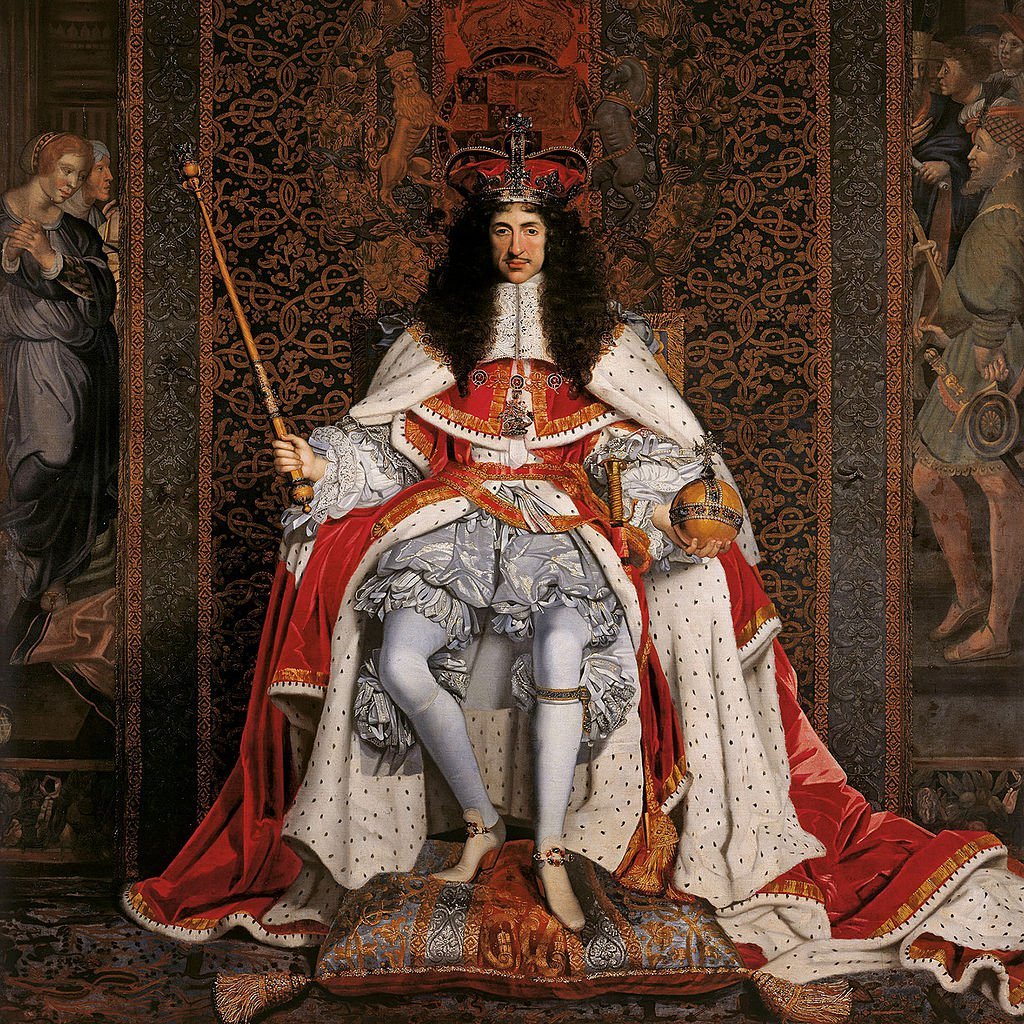
James II (1685-1688)
The last Catholic king. Continued the House of Stuart’s struggle with Parliament; his belief in absolute power caused trouble. Deposed in the Glorious Revolution, when Parliament invited the Protestant Dutch prince William of Orange to take over.
49/63
The last Catholic king. Continued the House of Stuart’s struggle with Parliament; his belief in absolute power caused trouble. Deposed in the Glorious Revolution, when Parliament invited the Protestant Dutch prince William of Orange to take over.
49/63

William III (1689-1702)
He invaded England (relatively peacefully) and deposed James to accept Parliament’s proposed model of constitutional monarchy, which along with a series of important legislative reforms essentially gave Parliament supreme power in England.
50/63
He invaded England (relatively peacefully) and deposed James to accept Parliament’s proposed model of constitutional monarchy, which along with a series of important legislative reforms essentially gave Parliament supreme power in England.
50/63

Anne (1702-1714)
William’s sister in law. Last of the House of Stuart. During her reign the Act of Union was passed, uniting England and Scotland into the Kingdom of Great Britain. Died childless; her reputation was hurt by the memoirs of the Duchess of Marlborough.
51/63
William’s sister in law. Last of the House of Stuart. During her reign the Act of Union was passed, uniting England and Scotland into the Kingdom of Great Britain. Died childless; her reputation was hurt by the memoirs of the Duchess of Marlborough.
51/63

George I (1714-1727)
The first king of the House of Hannover, Anne’s second cousin, he succeeded to the British throne by virtue of being her closest living Protestant relative. Under his reign, royal authority was truly replaced by Parliamentary power.
52/63
The first king of the House of Hannover, Anne’s second cousin, he succeeded to the British throne by virtue of being her closest living Protestant relative. Under his reign, royal authority was truly replaced by Parliamentary power.
52/63

George II (1727-1760)
Held little real power, though he was the last British monarch to lead an army in the field, during the War of the Austrian Succession. A mixed reputation, with criticism of his unpleasant personality balanced by influence on British foreign policy.
53/63
Held little real power, though he was the last British monarch to lead an army in the field, during the War of the Austrian Succession. A mixed reputation, with criticism of his unpleasant personality balanced by influence on British foreign policy.
53/63

George III (1760-1820)
A wildly eventful reign. Britain became the foremost power in Europe, they lost America, and they helped defeat Napoleon. George went a bit mad towards the end of his life. Ireland became part of the Kingdom of Great Britain in 1800.
54/63
A wildly eventful reign. Britain became the foremost power in Europe, they lost America, and they helped defeat Napoleon. George went a bit mad towards the end of his life. Ireland became part of the Kingdom of Great Britain in 1800.
54/63

George IV (1820-1830)
He already been serving as Prince Regent since 1811 because of his father’s declining mental health. George led an extravagant lifestyle true to the Regency Era.
55/63
He already been serving as Prince Regent since 1811 because of his father’s declining mental health. George led an extravagant lifestyle true to the Regency Era.
55/63

William IV (1830-1837)
An oft forgotten king. During his reign slavery in the British Empire was finally abolished, and the Great Reform Act of 1832 was passed.
56/63
An oft forgotten king. During his reign slavery in the British Empire was finally abolished, and the Great Reform Act of 1832 was passed.
56/63

Victoria (1837-1901)
Called the grandmother of Europe, for how many of her descendants became monarchs around the continent. Wore only black after the death her beloved Prince Albert in 1861. The Victorian Era.
57/63
Called the grandmother of Europe, for how many of her descendants became monarchs around the continent. Wore only black after the death her beloved Prince Albert in 1861. The Victorian Era.
57/63

Edward VII (1901-1910)
The first king of the House of Saxe-Coburg-Gotha. Something of a playboy in his early years. Helped establish the truly “ceremonial” monarchy. Edward’s long heirdom (60 years!) gave him time to practice. The Edwardian Era was a nostalgic one.
58/63
The first king of the House of Saxe-Coburg-Gotha. Something of a playboy in his early years. Helped establish the truly “ceremonial” monarchy. Edward’s long heirdom (60 years!) gave him time to practice. The Edwardian Era was a nostalgic one.
58/63

George V (1910-1936)
A reign defined by the Great War and profound social and technological upheaval around the world. Changed the family name to Windsor. Skilfully managed many crises. Liked stamp-collecting.
59/63
A reign defined by the Great War and profound social and technological upheaval around the world. Changed the family name to Windsor. Skilfully managed many crises. Liked stamp-collecting.
59/63

Edward VIII (1936)
Never comfortable being part of the Royal Family. Triggered a constitutional crisis by proposing to marry a remarried American divorcee, Wallis Simpson. He had to abdicate the throne in order to marry her.
60/63
Never comfortable being part of the Royal Family. Triggered a constitutional crisis by proposing to marry a remarried American divorcee, Wallis Simpson. He had to abdicate the throne in order to marry her.
60/63

George VI (1936-1952)
Defined the modern monarch. His decision to remain in London during the Second World War was hugely important for national morale, and set the standard for how kings and queens could remain important in a changing world.
61/63
Defined the modern monarch. His decision to remain in London during the Second World War was hugely important for national morale, and set the standard for how kings and queens could remain important in a changing world.
61/63

King Charles III (2022-)
Longest serving heir apparent in British history. His two previous namesakes were certainly colourful characters.
63/63
Longest serving heir apparent in British history. His two previous namesakes were certainly colourful characters.
63/63

• • •
Missing some Tweet in this thread? You can try to
force a refresh























